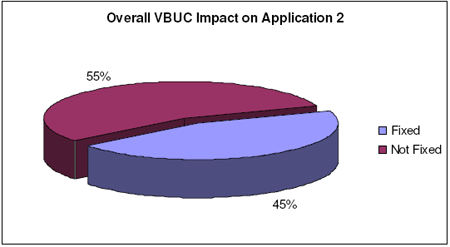Artinsoft Visual Basic Upgrade Companion Serial
суббота 02 февраля admin 89
NET migration project (up to 20,000 lines of code)? Mpls book. For a limited time you can get a free license of our advanced Visual Basic Upgrade Companion, a tool that.
The vast majority of VB6 business applications use one or more 3rd-party (non-Microsoft) ActiveX controls. It is therefore essential that the VB6 conversion software of your choice be able to correctly convert these controls to.NET with a cost-effective approach. This document illustrates how VB Migration Partner can perform this task using an innovative approach based on wrapper classes, and intends to prove that - unlike more traditional approaches based on code transformations and mapping techniques - only wrapper classes can account for all minor and minor differences between ActiveX and.NET controls, can generate concise and efficient code, and don’t cause bottlenecks in the migration project. Table of Contents ActiveX control migration and replacement In describing how VB Migration Partner and other similar tools work it is essential to agree on what “ converting an ActiveX control to.NET” really means. In fact, there are two distinct levels for this conversion. For the sake of clarity we will use the terms ActiveX migration and ActiveX replacement, even though in a somewhat arbitrary fashion.
In the context of this document: • ActiveX control migration is the process of generating VB6 forms into.NET forms that still reference the same ActiveX control, via COM Interop. • ActiveX control replacement is the process of substituting the migrated ActiveX control with a pure.NET control, be it a native Microsoft.NET control, a 3rd-party.NET control, or a custom-made.NET control. ActiveX migration is made possible by COM Interop, the portion of.NET Framework that allows.NET apps to communicate with COM components and ActiveX controls. COM Interop is a great technology that works unbelievably well considering that COM and.NET are completely different worlds. However, COM Interop has several issues and shortcomings, which explain why ActiveX replacement is nearly always necessary. In describing the ActiveX conversion process, it is useful to distinguish between two different kinds of ActiveX controls and components, depending on whether the ActiveX control is part of the user interface: • Invisible ActiveX controls are controls that you place on VB6 forms, so that you can set their attributes in the Properties window, yet they don’t produce a visible user interface at runtime.
Examples of these controls are MSComm (for serial communications), WinSock (to TCP and UDP communications), or Microsoft Script Control. • Standard (visible) ActiveX controls are the usual controls that you used to enrich your VB6 apps with a better user interface, for example MSDataGrid, MSChart, MSCalendar. The majority of 3rd-party controls also belong to this categories, for example the VideoSoft VSFlexGrid, Apex TrueDBGrid, or FarPoint Spread. COM Interop works very well with COM type libraries and ActiveX controls that have no user interface, therefore it is usually considered to be acceptable for migrated apps to preserve all references to type libraries and invisible ActiveX controls. Conversely, COM Interop may have problems with more complex ActiveX controls, such as grids and charting controls. These controls may behave errantly or crash the application when hosted on a.NET form, therefore it is highly recommended that the migrated.NET application have no reference to the original ActiveX controls and that you replace all ActiveX controls with equivalent, fully managed.NET controls.
